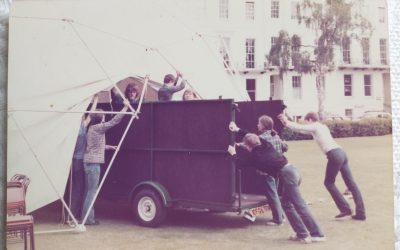I did some guest teaching at the University of St Andrews the other day. During one of my sessions, a member of the audience asked an interesting question. I didn’t know the answer and am still thinking about it.
He said: ‘I have some modern recordings of Baroque music. The orchestra plays with a lot of swing and bounce. The tempos are fast. It makes you want to tap your toes along with the music!
‘I wonder though whether this entertaining, toe-tapping style is something modern, something that has developed since the jazz age, the swing era, and all that. Obviously that music is in our blood now, so maybe it’s natural for today’s musicians to try the style in old music as well.
But do you think musicians in the Baroque era played with that kind of rhythm and swing? Did audiences smile, nod their heads and tap their feet to the music? Or would that have been impossible, something they would never have dreamed of doing?’
I said what came into my head: that we can’t know for sure how long-ago musicians played, nor how audiences reacted. There are no 18th Century films or sound recordings, so unless we have first-hand descriptions, we can only speculate.
But my guess would be that in every era, especially with music which originated as dance, people would have enjoyed tapping their toes along with the music. Of course Baroque audiences might have been restrained by the setting they found themselves in – the church, for example, or the formal atmosphere of the court. Even today we are held in check by that sort of context. Apart from that, however, I’d guess that musicians have always hoped to get their audiences’ toes tapping, and listeners have always been happy to respond.




I’ve often wondered about this – my feeling is that music often produces a direct and physical response from everyone so I can’t imagine that this wasn’t part of the instinct of musicians and audiences in past centuries – but as you say, the restraint on this instinct might have been the setting. We think of music as being available as a natural and accessible part of our lives but this would not have been the case for formal composed music of the Baroque.